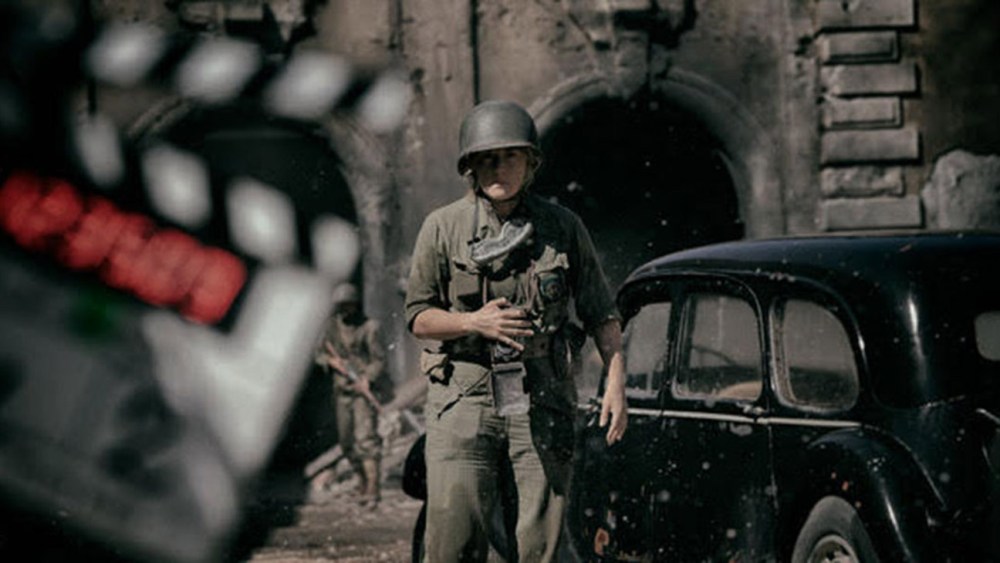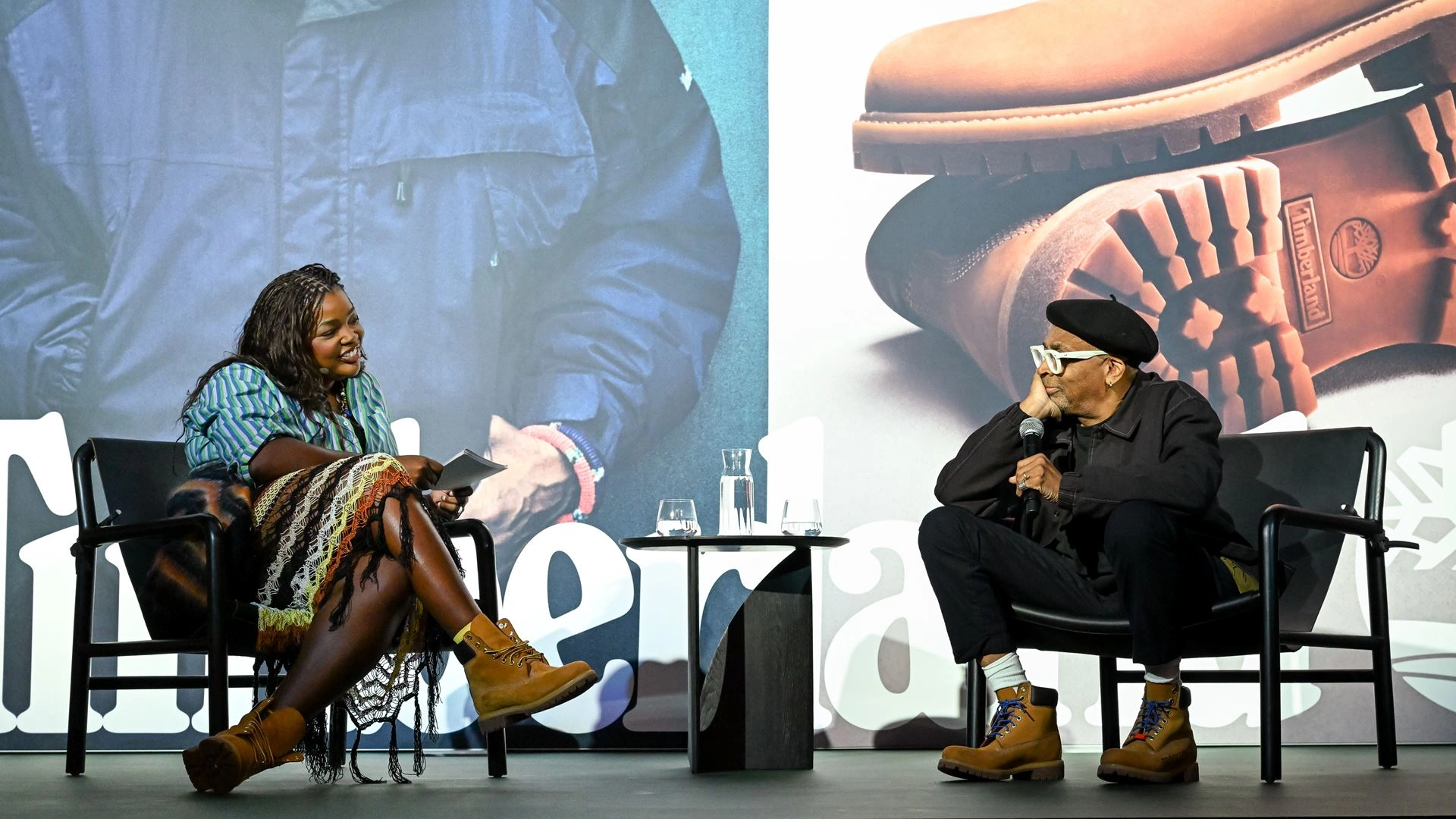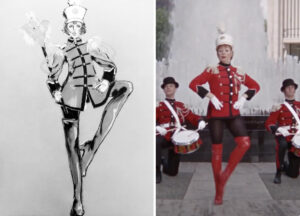Kate Winslet has long been a cinematic powerhouse, carving her path with nuanced performances that transcend genres. From her breakout role in Titanic to her recent portrayal of WWII photographer Lee Miller in Lee, Winslet continues to captivate audiences. Her portrayal of Miller—a trailblazing photojournalist and model turned war correspondent—offers a deep dive into the complexities of a woman navigating the male-dominated world of wartime reporting. In a candid discussion, Winslet opened up about her journey with Lee, Hollywood’s persistent double standards, and the enduring legacy of Titanic.
Reclaiming Lee Miller’s Story
When Kate Winslet decided to portray Lee Miller, it wasn’t just about stepping into another transformative role—it was about reclaiming the narrative of a woman whose contributions to history have often been overshadowed. Miller’s journey from Vogue model to a war photographer documenting the horrors of Nazi concentration camps is a story of resilience, bravery, and complexity. Winslet not only starred in Lee but also produced the film, signaling her deep commitment to ensuring Miller’s story was told authentically.
“I wanted to honor her for the remarkable, flawed, and brilliant human she was,” Winslet explains. “Lee Miller lived a life full of contradictions—she was glamorous yet gritty, confident yet vulnerable. This duality made her fascinating and human.”
For Winslet, preparing for the role involved immersing herself in Miller’s world. She studied her photographs, personal writings, and biographies to capture the essence of a woman who used her lens to challenge power structures and shed light on humanity’s darkest moments. “The more I learned about her, the more I realized how much of her spirit resonated with me. Her bravery in standing at the frontlines and her refusal to conform to societal expectations inspired me to take this role.”
The Weight of Self-Doubt
Despite her illustrious career, Winslet confesses to battling moments of imposter syndrome—even on the set of Lee. “Often I will turn to another crewmember and say, ‘They just read the wrong name off the list. I’m telling you, they didn’t mean for me to be here,’” she admits. Winslet’s honesty about her self-doubt reveals a vulnerability that makes her all the more relatable.
These moments of uncertainty didn’t deter her from fully committing to the demanding role. Playing Lee Miller required Winslet to tap into her own strength, both physical and emotional. Filming war scenes and navigating the emotional gravity of Miller’s experiences took a toll, but it also reinforced Winslet’s belief in the importance of telling stories about courageous, flawed women.
Defying Hollywood Double Standards
Winslet has consistently challenged Hollywood’s narrow standards, particularly around aging, body image, and gender roles. As an actress who came of age in an industry notorious for its scrutiny of women, she has been vocal about resisting the pressure to conform.
In her early career, Winslet faced relentless commentary about her appearance, something she has fiercely pushed back against. “I’ve always refused to let my body be the center of my story,” she says. “The obsession with perfection is exhausting, and it’s entirely unrealistic.”
With Lee, Winslet not only pushed boundaries on-screen but also behind the scenes. As a producer, she worked to ensure that the film set was a space of inclusivity and respect, advocating for fair representation of women in key creative roles. “Hollywood still has a long way to go in treating women as equals,” she notes. “But we’re seeing progress. With Lee, I wanted to set an example of what an empowering and collaborative environment could look like.”
The Everlasting Titanic
No conversation about Kate Winslet would be complete without mentioning Titanic. Despite nearly three decades since the film’s release, it remains a cultural touchstone—and Winslet remains its most recognizable face. Yet, the actress admits that the constant association with the blockbuster can be both a blessing and a challenge.
“Of course, I’m proud of Titanic. It changed my life in ways I could never have imagined,” she says. “But sometimes, I wish people would see the other stories I’ve told since then.” Winslet’s ability to transition from mainstream blockbusters to intimate indie films is a testament to her versatility, but the shadow of Titanic often looms large.
Fans still ask her about the infamous debate surrounding the door scene with Leonardo DiCaprio’s Jack Dawson. Winslet laughs, “I’ve lost count of how many times I’ve been asked about it! For the record, I agree—there was probably room for both of us on that door.”
Championing Female-Centric Narratives
What draws Winslet to roles like Lee Miller is their refusal to conform to archetypes. She seeks out characters who defy expectations, embracing their imperfections and complexities. This pursuit aligns with her broader goal of championing female-centric narratives in an industry where such stories have historically been sidelined.
“For me, acting isn’t about being liked or looking perfect. It’s about truth,” Winslet explains. “Women’s stories deserve to be told in all their messiness, beauty, and contradictions. “I wanted to honor her for the remarkable, flawed, and brilliant human she was,” Winslet explains. “Lee Miller lived a life that defied convention, and her work as a photographer during World War II captured some of the most harrowing and important images of the 20th century. Her story deserves to be told with nuance and integrity.”
The film, directed by Ellen Kuras, follows Miller as she navigates the frontlines of World War II, capturing the brutal realities of the conflict. Winslet was adamant about portraying Miller not just as an icon but as a complex, multifaceted woman. “She wasn’t perfect, and that’s what drew me to her. Lee was courageous and groundbreaking, but she also struggled with trauma and her own demons. Those contradictions make her real.”
Winslet’s dedication to the project extended beyond her performance. As a producer, she advocated for creative choices that reflected Miller’s life with unflinching honesty. “I felt an enormous responsibility to get it right—not to romanticize or simplify her story. She was a trailblazer, and her legacy as an artist and journalist demands respect.”
Defying Hollywood Double Standards
Winslet has never shied away from speaking out about the challenges women face in Hollywood. Throughout her career, she has defied the industry’s expectations, consistently choosing roles that prioritize depth over glamour. Yet, she admits that the double standards persist, even after decades in the spotlight.
“Hollywood can be brutal for women, especially as we age,” she says. “We’re still fighting the idea that women have an expiration date, while men seem to get more distinguished with time. It’s frustrating, but I’ve learned to channel that frustration into my work.”
Winslet recalls moments of self-doubt on the set of Lee, despite her extensive experience. “Often I will turn to another crewmember and say, ‘They just read the wrong name off the list. I’m telling you, they didn’t mean for me to be here.’ It’s a strange feeling, but I think many women can relate to that imposter syndrome, no matter how accomplished they are.”
The industry’s scrutiny of women’s appearances remains a sore point for Winslet, who has faced media criticism about her body throughout her career. “It’s exhausting,” she admits. “I’m here to act, to tell stories, not to meet some arbitrary standard of beauty. Thankfully, I think the conversation is starting to shift, but there’s still work to be done.”
No conversation about Kate Winslet is complete without mention of Titanic, the 1997 blockbuster that catapulted her to international fame. Though it has been over 25 years since the film’s release, Winslet continues to be asked about her role as Rose DeWitt Bukater.
“Titanic was a defining moment in my life and career,” she acknowledges. “I’ll always be proud of it. But sometimes, it feels like no matter what I do, people will always bring it back to Titanic. It’s bittersweet because while I’m grateful for the opportunities it gave me, I also want to be seen as more than just that one role.”
Winslet notes that the industry has evolved since the film’s release, but she often wonders how Titanic would be received today. “There was so much pressure on that film and on us as actors. If it were made now, I think the discourse around it would be entirely different. Social media would’ve magnified everything—the praise, the criticism, the scrutiny.”
Despite this, Winslet embraces the legacy of the film and its impact on audiences. “People still come up to me and tell me how much it means to them. That’s incredibly moving. But I’ve also grown so much as an actor since then, and I hope people can see that evolution in my work.”
Balancing Vulnerability and Strength
One of Winslet’s greatest strengths as an actor is her ability to balance vulnerability and strength in her performances. This duality is evident in her portrayal of Lee Miller, a character who embodies resilience while grappling with personal trauma.
“It’s important to me that my characters feel authentic,” she explains. “With Lee, I wanted to show her courage but also her fragility. She witnessed unimaginable horrors, and that left a mark on her. As actors, we have a responsibility to portray those experiences with honesty.”
Winslet also credits her collaborators on Lee for fostering an environment that allowed her to fully immerse herself in the role. “Ellen [Kuras] is an extraordinary director, and the entire team brought so much passion to the project. It was a true labor of love.”
A Legacy of Fearless Storytelling
As Winslet reflects on her career, she is quick to highlight the importance of storytelling as a means of understanding humanity. “I’ve always believed that stories have the power to connect us, to challenge us, and to inspire change,” she says. “That’s what drew me to acting in the first place—the chance to step into someone else’s shoes and share their truth.”
With Lee, Winslet continues her legacy of fearless storytelling, shedding light on a woman whose contributions have too often been overlooked. “This film is a celebration of Lee Miller’s life and work, but it’s also a reminder of the countless women throughout history who have paved the way for future generations. I hope it inspires people to learn more about her and to honor the stories of other trailblazers.”
Looking Ahead
At 48, Winslet remains at the top of her game, with no plans of slowing down. “There are still so many stories I want to tell, so many characters I want to explore,” she says. “I’m incredibly lucky to be in a position where I can choose projects that matter to me.”
As for what’s next, Winslet hints at a mix of acting and producing roles, with a continued focus on stories that resonate on a deeper level. “I want to keep pushing boundaries, both for myself and for the industry. There’s still so much work to be done, but I’m optimistic about the future.”
With Lee, Kate Winslet not only delivers a stunning performance but also reaffirms her status as one of Hollywood’s most fearless and versatile talents. Through her work, she continues to challenge conventions, amplify important stories, and inspire audiences around the world. And while Titanic may always loom large, Winslet’s body of work proves she is far more than a single role—she is an artist, a trailblazer, and a force to be reckoned with.
No comments yet.








